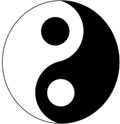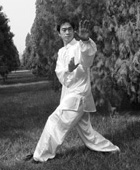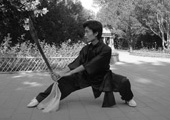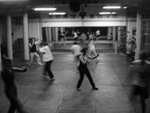Xingyi Quan - Form and Intention Kungfu
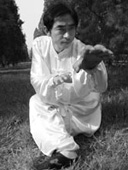
Xingyi is one of the three major internal martial arts. It is a very direct style designed to invade the opponent’s space with explosive footwork and combined techniques of attack. One Xingyi principle states that "on meeting the opponent, movement is like an exploding volcano". Its movements are based on the 5 element fists and 12 animal forms, and while these techniques are taught outside China, The Beijing Milun School boasts a range of techniques unknown to many Xingyi practitioners. The style combines external “form” which is technical movement, and internal “intention” whereby the practitioner focuses the mind and the qi to direct additional power. On the surface Xingyi movements do not appear complex, but the source of its power is an ongoing search for the student, and persistent study creates a deeper and deeper understanding of the sublime subtlety of the style. Xingyi is suitable for students of all levels.
Some of the Xingyi disciplines taught at The Beijing Milun School of Traditional Kungfu:
| Empty Hands | Weapons |
| 5 Element Fists | Black Tiger Short Staff (1 and 2) |
| 5 Element Continuous Fists | 5 Element Staff |
| 5 Element Linked Fists | 5 Element Linked Staff |
| 5 Element Chain Fists (1 and 2) | 6 Harmonies Staff (1 and 2) |
| 12 Animals Buddha’s Warrior Tiger | Twisting Body Staff |
| 8 forms Swallow | Duan Men Staff |
| 8 forms Chicken | 5 Element Sword |
| 4 Fists Enter and Exit the Cave | 5 Element Linked Sword |
| 12 Great Hammers | Cloud Dragon Sword |
| 12 Linked Hammer Fists | San Cai Sword |
| 8 Hard Hands | Twisting Body Sword |
| 8 Soft Hands | 5 Element Sabre |
| Zha Shi Chui (1 and 2) | 5 Element Linked Sword Duan Men Sword |
| Open the Mountain Fists | 5 Element Spear |
| 5 Elements Linked Feet | 5 Element Linked Spear Xing Yi monk’s Spade |





